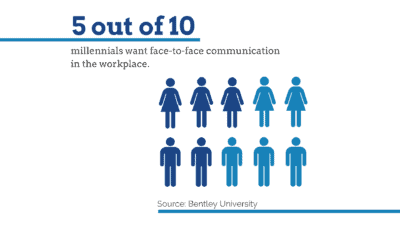Lead Scoring 101: Explicit Scoring vs. Implicit Scoring

We all know that lead scoring is a way to score leads. It’s also an important way to make sure your sales team is spending their time on the leads most likely to convert. But, what makes up lead scoring? In this post, we’ll discuss explicit scoring and implicit scoring, what they mean, and how best to use them.
Explicit Lead Scoring
Explicit lead scoring is based on information you’ve received from the lead directly (i.e. form fill information). This type of data includes everything from name and email to job title and company name.
The idea behind explicit lead scoring is that leads with specific values or data sets are more valuable and likely to convert than others. For example, if your company sells marketing software, you may score someone with a job title containing “Marketing” higher than a job title containing “Support.”
Explicit lead scoring ensures your campaigns are targeting the right audience. If you want marketers but keep getting customer support teams, take a look at how you’re targeting and where your campaigns are running. Explicit lead scoring can also help you find the decision makers who are purchasing your product or service. Furthermore, collecting explicit information on what problems they’re trying to solve can allow you to determine how to message and selling points.
However, relying solely on explicit lead scoring can be dangerous for a couple of reasons.
Fake Data
Not everyone is entirely truthful when filling out online forms. Sometimes people exaggerate or embellish their job titles. They might put in fake locations or even contact information to avoid marketing emails and sales phone calls.
Fake data can be difficult to protect against. However, there are ways you can double check some of your data. Add script to your landing pages that identify fake email addresses or phone numbers. Use drop down menus wherever possible to minimize free text fields. Additionally, you can ask sales to double check job titles when they reach out.
Your assumptions may be faulty
When setting up your lead scoring model, you may have made some inferences about your customer base and the decision makers behind them. For example, say your software is used by developers, so you’ve only targeted developers until now. However, when going back through the proposals, you find that it’s actually the CTO that usually makes the decision to buy. In this case, you’ve mistakenly inferred that the user is also the buyer.
Sometimes, when focusing solely on explicit lead scoring we can overlook prospects who are ready to buy simply because they don’t fit into the model we’ve created.
Implicit Lead Scoring
Implicit lead scoring is lead scoring based on observed behaviors and inferred information. Observed behaviors can be anything from attending a trade show or webinar, downloading an asset, or visiting certain web pages. Inferred information includes things like inferred location or IP address.
The idea behind implicit lead scoring is that people who buy your product will exhibit certain behaviors indicating their intent to purchase. To set up an implicit lead scoring model, a company will typically review all actions that a person can take and assign positive and negative values to those actions.
For example, a person downloading a white paper may be worth 10 points. If they request a demo, that may be worth 20 points. But, if they don’t interact with the website for a month, they may lose 15 points.
Implicit lead scoring is a great way to monitor people who are interested in your product. Activity is a great indicator of interest and can often translate into a purchase. However, there are some issues with using a lead scoring model based on only implicit behavior…
Actions don’t speak louder than words
Just because someone is interested in a white paper or looks at your pricing page doesn’t mean they’re a fit for your company. For example, if someone requests a demo but works for a dental clinic and you only work with large hospitals, they would not be a high-value prospect.
Ignoring your target personas in favor of activity means your sales team will spend their time on the wrong prospects.
Every conversion path is different
With how much content is available via the Web, every person’s conversion path is slightly different. Not everyone who buys your product or service will participate in the same or – even same number of – activities.
One potential customer may have read about you on another site or had a colleague recommend you. Subsequently, they may not look into any of your webinars or assets and go straight for a demo. On the flip side, someone else may download every asset you’ve developed and earn a high lead score and never intend to buy.
Your offers may not resonate with your audience
A problem with implicit lead scoring is that sometimes prospects never reach a high score simply because the assets or events you have available aren’t of interest. This is a problem with assuming what your prospects are interested in and then developing assets. Instead, develop assets based on the research you’ve done on your prospects.
Otherwise, you may end up with no activity and your sales team twiddling their thumbs.
The best lead scoring model
Lead scoring shouldn’t be just implicit or explicit. The most effective models use data from both. Pair implicit data with explicit data. Using both will allow you to market and sell to people completing actions you know are indicative of conversion and in your target audience. Using a model combining both methods may be more complicated, but it will allow you to focus your efforts and increase conversion.
After implementing your lead scoring model, you should review it every few months to make sure it’s accurate. Are the people you think should close actually closing? If not, it may be time to review your criteria on how leads are scored.
Additionally, review your lead scoring models at least once a year for efficacy. Businesses grow and change and the lead scoring model from last year may be excluding (or including) the wrong people.
Need help implementing a lead scoring model that works for your business? DemandZEN can help. Reach out today.
You Might Also Enjoy These Posts
Gamification Strategies: Badges in B2B Marketing
Managing a Remote Sales Team: The Importance of Face Time
Welcome To DemandZEN
DemandZEN specializes in Account-Based Demand Generation and solving the challenges around finding, engaging and converting target accounts into real opportunities for B2B Technology and Services companies.



